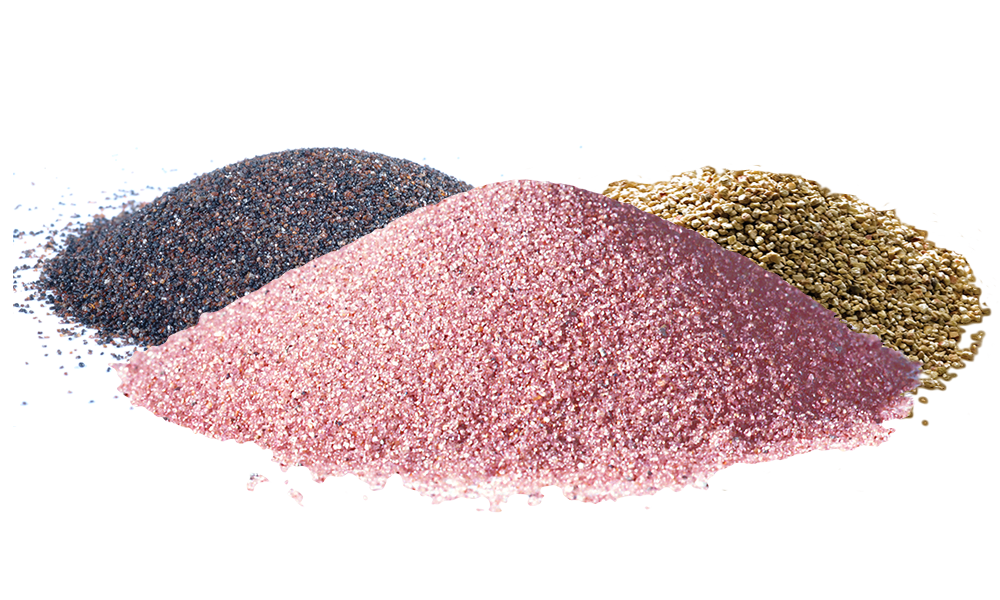Abrasive grains are the fundamental components of abrasive tools and materials, playing a crucial role in cutting, grinding, polishing, and finishing operations. These tiny, hard particles are engineered to remove material from surfaces with high precision and efficiency. Whether used in sandpaper, grinding wheels, or cutting discs, abrasive grains determine the performance, durability, and quality of the finishing process across a wide range of industries—from metalworking and construction to electronics and automotive manufacturing.

What Are Abrasive Grains?
Abrasive grains are hard materials that are designed to fracture under pressure, creating new sharp edges for continued cutting action. They are bonded to tools or materials to abrade, shape, smooth, or finish a surface through mechanical friction. The type, shape, hardness, and size of these grains dictate the cutting ability and longevity of the abrasive tool.
These grains are typically produced synthetically, but some natural forms also exist. Synthetic abrasives offer consistency, high performance, and are tailored for specific applications and materials.
Types of Abrasive Grains
There are several types of abrasive grains, each with distinct properties and ideal applications:
1. Aluminum Oxide (Al2O3)
One of the most commonly used abrasives, aluminum oxide is known for its toughness and durability. It is ideal for grinding steel, iron, and other ferrous metals. Variants like white, pink, and brown aluminum oxide offer different cutting characteristics.
2. Silicon Carbide (SiC)
This grain is harder and sharper than aluminum oxide but less tough. It is excellent for grinding non-ferrous metals, stone, ceramics, and glass. Silicon carbide is also commonly used for wet sanding applications.
3. Zirconia Alumina
A tough, long-lasting grain that works well for heavy-duty grinding on stainless steel and high-alloy metals. It offers a self-sharpening characteristic, making it ideal for high-pressure applications.
4. Ceramic Alumina
The most advanced abrasive grain, ceramic alumina is engineered for maximum sharpness and heat resistance. It offers superior performance for high-speed grinding and difficult-to-machine metals.
5. Garnet
A natural abrasive used mostly in woodworking and waterjet cutting. It is less aggressive but provides a smooth finish.
6. Diamond and Cubic Boron Nitride (CBN)
These are superabrasives, significantly harder than conventional abrasives. Diamond is used for non-metallic materials such as ceramics and glass, while CBN is preferred for hardened steel and superalloys.
Properties That Define Abrasive Grains
• Hardness: Determines how well the grain can cut hard materials.
• Toughness: The ability to resist fracturing. Tough grains are suitable for heavy material removal.
• Friability: The tendency of a grain to fracture and expose new sharp edges. High friability grains maintain sharpness longer.
• Grain Size: Measured in mesh or microns, it affects the surface finish and cutting rate. Coarse grains remove more material; fine grains give a smoother finish.
• Shape: Angular grains offer aggressive cutting, while round grains provide a more polished finish.
Applications of Abrasive Grains
Abrasive grains are used in a variety of tools and formats, including:
• Grinding Wheels: For heavy material removal and precision machining.
• Sandpaper: For wood, metal, and drywall finishing.
• Cutting Discs: In fabrication, construction, and automotive industries.
• Polishing Compounds: For achieving mirror-like finishes on metals and stones.
• Blasting Media: For surface cleaning and preparation.
• Lapping and Honing: In precision engineering for fine-tuning surface texture.
Choosing the Right Abrasive Grain
Selecting the proper abrasive grain depends on several factors:
• Material Being Worked On: Harder grains like diamond or CBN are needed for tough materials, while aluminum oxide suffices for softer metals.
• Desired Finish: Finer grains yield smoother finishes; coarser grains are for rough shaping.
• Machining Method: High-speed operations may require heat-resistant grains like ceramic alumina.
• Tool Type: Each abrasive tool is optimized for a certain type of grain and bonding.
Innovations in Abrasive Grain Technology
Modern manufacturing techniques have led to engineered abrasives with microstructured shapes, controlled grain orientation, and heat-resistant coatings. These enhancements increase productivity, reduce tool wear, and improve surface quality. For example, proprietary ceramic grains used in high-end abrasives offer self-sharpening characteristics and cool cutting action, making them ideal for high-performance grinding.
Environmental and Safety Considerations
The production and use of abrasive grains must consider environmental and worker safety aspects. Dust control, recycling of spent abrasives, and using eco-friendly materials are important trends in the abrasive industry. Protective gear and proper ventilation are essential when working with abrasive tools. Visit our website https://www.master-abrasive.com/ for more information.
Conclusion
Abrasive grains may be microscopic, but they make a massive impact in manufacturing, construction, and finishing processes. By choosing the right type and grade of abrasive grain, users can achieve efficient, precise, and high-quality results across various materials and industries. As technology advances, so too does the performance of these tiny powerhouses, reinforcing their position at the cutting edge of modern industry.
Comments on “Abrasive Grains: The Cutting Edge of Surface Processing”